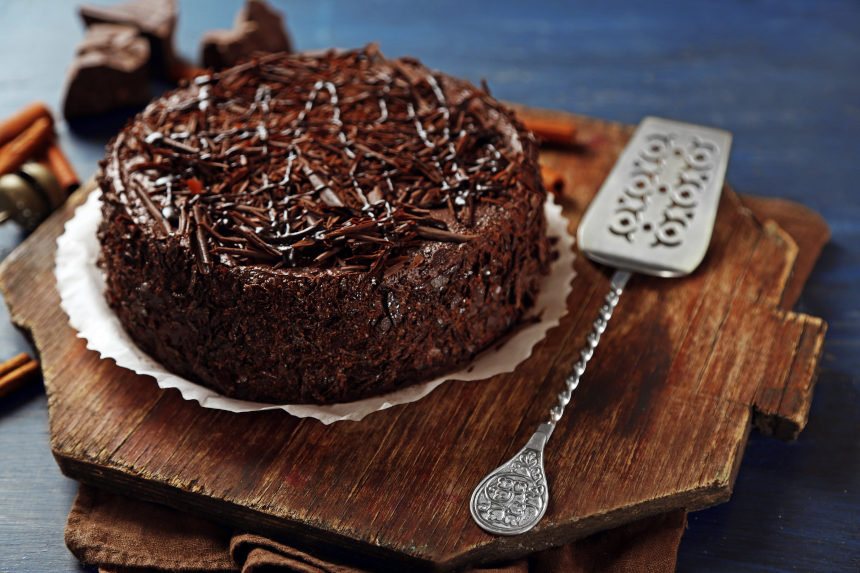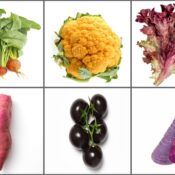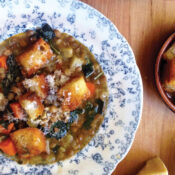There’s a reason that people have been eating chocolate since 2000 B.C: it’s delicious! It’s the same reason we observe not just World Chocolate Day, but also International Chocolate Day, National Chocolate Day, and a second National Chocolate Day a few months after the first. With over 4,000 years of recipes starring the ingredient, there are plenty of ways to celebrate chocolate — whether for Dark Chocolate Day on February 1st or just because it’s Tuesday. Surviving American chocolate recipes date back to the 1800s, and although our tastes may have changed since then, some confections, like German chocolate cakes and chocolate pudding, are still a treat. Here are a few recipes from kitchens and cookbooks of our past.
From Mrs. Beeton’s Cookery Book, 1861
Chocolate Almonds
Ingredients — Almonds blanched and dried, chocolate, vanilla essence.
Method — Dissolve the chocolate in the smallest possible quantity of hot water, and flavour it to taste with vanilla essence. Dip each almond in separately, and place them on an oiled slab or plates to set.
From the Post, April 15, 1865
Chocolate Cakes
A “useful receipt” for chocolate cakes: Beat the whites of two eggs with a quarter of a pound of pounded sugar into a frothy cream, and the juice of half a lemon, and six ounces of finely-grated chocolate. Drop this mixture in spoonsful on a flat tin, and bake them slowly.
Written when recipes were still referred to as “receipts,” these instructions produce bite-sized flourless cakes.
Chocolate Caramels
This “receipt” for chocolate caramels, also from 1865, can be found in the Post between instructions for Edith’s Pudding and Cold Process Soap:
One cup milk, 2 of molasses, 1 of sugar, 1 ½ cakes chocolate, and butter the size of a hen’s egg. Grate the chocolate, and stir it into the milk when boiling; then stir in gradually the other ingredients. Try it as you would molasses candy, and when properly boiled, spread it out in pans to cool, cutting it up in pieces ½ inch square. This is considered a very delicious kind of French confectionary.
Make sure to go out back and grab an egg from the coop so you can measure the butter.
The Post, 1866
Chocolate Mange
Three ounces of French isinglass, dissolved in very little cold water; put on a quart of new milk to boil, grate half a cake of vanilla chocolate, and stir in the milk; then let it simmer, and add the dissolved isinglass; let this all simmer five minutes; then pour into a mould, and when cold and jellish, turn out and serve with cream.
This recipe for “mange” (which actually gets its name from the French word for “eat”) begins to sound even more appetizing when you find out that isinglass is another word for “fish gelatin.”
The Post, 1872
German Hard Chocolate Cakes
Grate and sift ½ a pound chocolate. Beat the yolks of two eggs, and add the chocolate gradually; add the whites of six eggs, beaten to snow, to the yolks and chocolate; beat well, and if not sweet enough, add sugar. If the chocolate is good, they will be sufficiently sweet. Take off small bits with a teaspoon, and bake on buttered paper.
Next to this “receipt” is a short article on mortality to remind the reader that we will be “never again young – always nearer and nearer to the very last – the end which is universal, the ‘last thing’ which will follow all other last things.” You’ll definitely need to reach for some chocolate after reading that one.
The Post, 1873
Chocolate Cream
Mix the yolks of six eggs, strained, with 2 oz. of pounded loaf sugar and 3 oz. of grated chocolate, add a pint of milk; set the mixture on the fire in a double saucepan, the outer one filled with hot water, and keep stirring till the cream thickens; dissolve in a little milk ¼ oz. of isinglass, previously soaked; add this to the cream, strain it, and pour it into a mould, and put it in a cold place or on ice to set.
People from the 1800s never met a recipe they couldn’t find a way to add gelatin to.
The Post, 1878
Chocolate Pudding
Allow three-fourths of a cupful of grated chocolate to a quart of rich, new milk; let it boil up and then set aside to cool; beat up the yolks of four eggs until very light, and stir gradually into the cooled chocolate; sweeten to taste and flavor with vanilla; pour into a baking dish and bake slowly.
Make a meringue of the beaten whites of the four eggs, to which add four tablespoonfuls of powdered sugar, and flavor with lemon; when the pudding is done, spread this over the top, and return to the oven to brown; serve either hot or cold.
There’s something so poetic about “allowing” chocolate to “rich, new milk.”
Foods: Preparation and Serving by Pearl L. Bailey, 1925
Chocolate Sauce
1 ½ c. water, 1/3 c. sugar, 2 sq. Chocolate, 1 tbsp. Cornstarch, ½ c. cold water, pinch of salt. Method. – Boil sugar and water 4 to 5 minutes to make a sirup. Mix chocolate, starch, and ½ c. cold water; add the salt, then the hot sirup, and cook 3 minutes. Flavor, and serve hot.
If you’re looking for a way to celebrate Dark Chocolate Day, delving into the history of the treat by trying one (or two… or three or four) of these classic chocolate recipes could be a fun way to do it.
And if you miss February 1st, Valentine’s Day is right around the corner.
Featured image: Shutterstock
Become a Saturday Evening Post member and enjoy unlimited access. Subscribe now




Comments
You certainly came up with some unusual chocolate recipes from the previous two centuries here. Chocolate Mange? Well, it’s probably delicious once out of the oven. The 1872 featurette on mortality sounds like it could have been written by Morticia Addams herself, Sally; good grief! The chocolate pudding recipe sounds good. I like it best cool though, with a dollop of whipped cream on top.